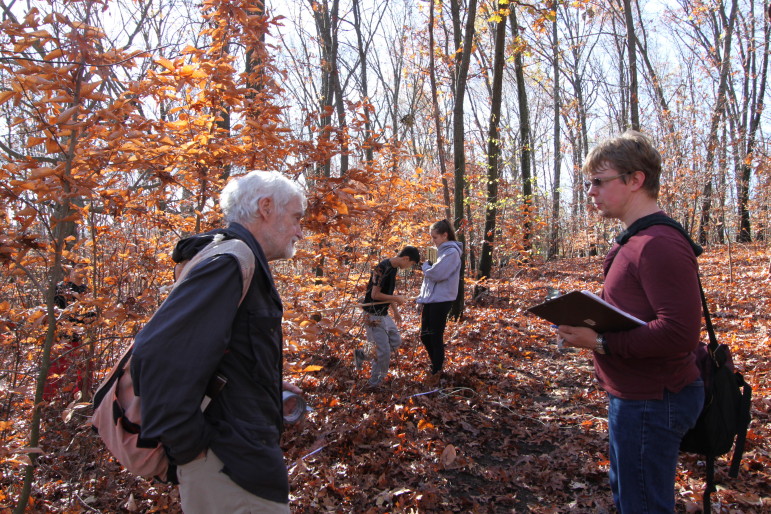
Charlie Breitrose
Conservation Commissioner Patrick Fairbairn, left, has teamed up with Watertown High School biology teacher Erik Hiltunen and his honors biology class to do survey the trees and plants on Whitney Hill.
When the Conservation Commission wanted to find out exactly what trees, plants and animals can be found in the town’s largest forested area, Commissioner Patick Fairbairn decided to enlist the help of students from Watertown High School.
Last week, two honors biology classes spent the morning walking around Whitney Hill, the area overlooking Victory Field, detailing which species are located in 31 plots being studied on the hill.
After coming up with the idea to enlist the help of students, Fairbairn approached School Committee Chairwoman Eileen Hsu-Balzer to ask if a combined effort with the schools could be possible. After speaking with a number of people, he found a WHS teacher who was interested.
“Erik Hiltunen was a teacher who saw the value of observation over a long period of time,” Fairbairn said. “I hope this town-gown partnership can persist.”
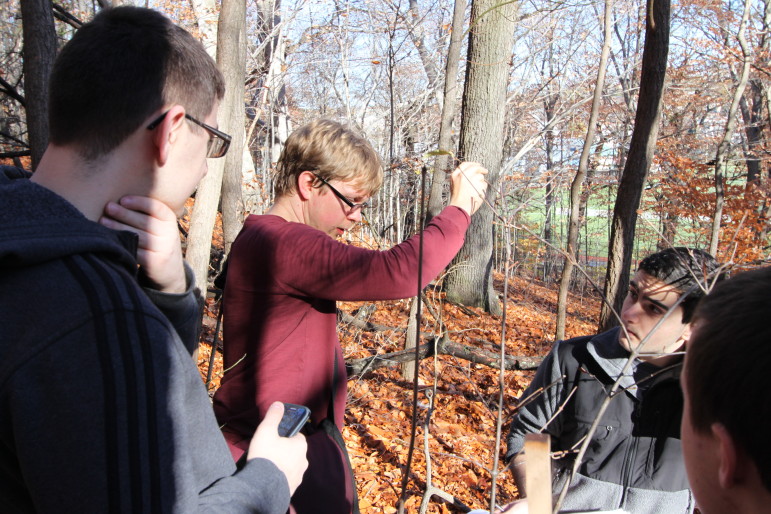
Charlie Breitrose
WHS teacher Erik Hiltunen works with his honors biology class to identify trees on Whitney Hill.
The opportunity for his classes to do real field work was an exciting one, Hiltunen said, especially since it is just a few minutes by foot from the high school.
“Having 10 acres of undisturbed forest as close to the the high school is a unique resource for us,” Hiltunen said.
During the first year students studies the hill the focus was the large trees. This year they looked at smaller species, and what has changed, he said.
Split into teams of three or four, the students hiked around the hill looking for PVC piping left in the hill to mark the plots set up the previous spring. Then they marked out an area like a pie piece with the pipe at the center. Each plot has six pieces of pie, said junior Emma Bannon.
In each plot, the students documented identified the species of trees that could be found, and marked them.
“We look at the bark and how the branches separate,” said junior Robert Belli.
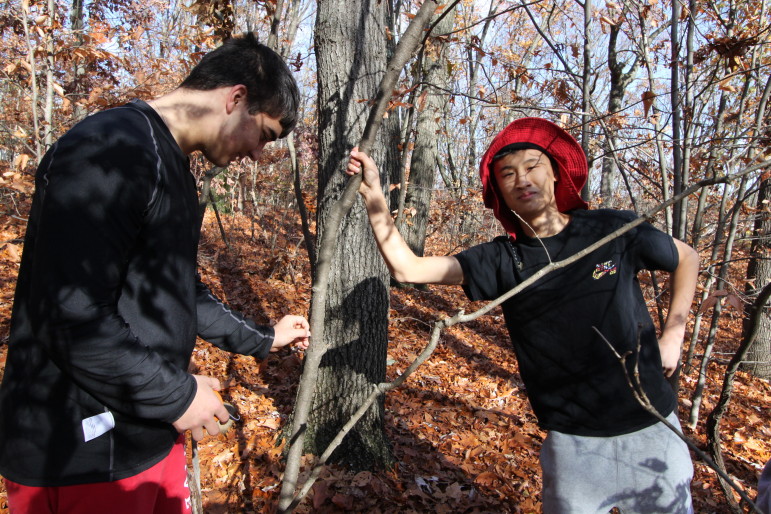
Charlie Breitrose
Honors biology students Zach Rimsa, left, and Lance Kuo look at trees in one of 31 plots around Whitney Hill being examined by the WHS students.
Among the species they found were beech trees, a few species of oaks, as well as maple trees – including the native sugar maple and the invasive Norway maple.
Fairbairn said there are a number of animals found on the hill, such as raccoons, squirrels and Fairbairn has even seen a coyote wandering around the forest.
Documenting the species of plants will help the Conservation Commission track what’s happening on Whitney Hill, said Fairbairn, who is a retired field ecologist. They can find out which native and invasive species make their home their, if invasives are taking over, the impact of climate change, and more.
Eventually, the data will help the Conservation Commission make recommendations for how to manage Whitney Hill, Fairbairn said, including possibly removing invasive plants and trees.
Other classes will be able to use the natural laboratory, Hiltunen said
“We have a new AP environmental studies class,” he said. “The idea is, after they take the AP test, the teacher plans to look at invasive species.”
Fairbairn said there are other possibilities for studies, and he has already had help from other residents who have expertise in plant management and mushrooms and fungi.
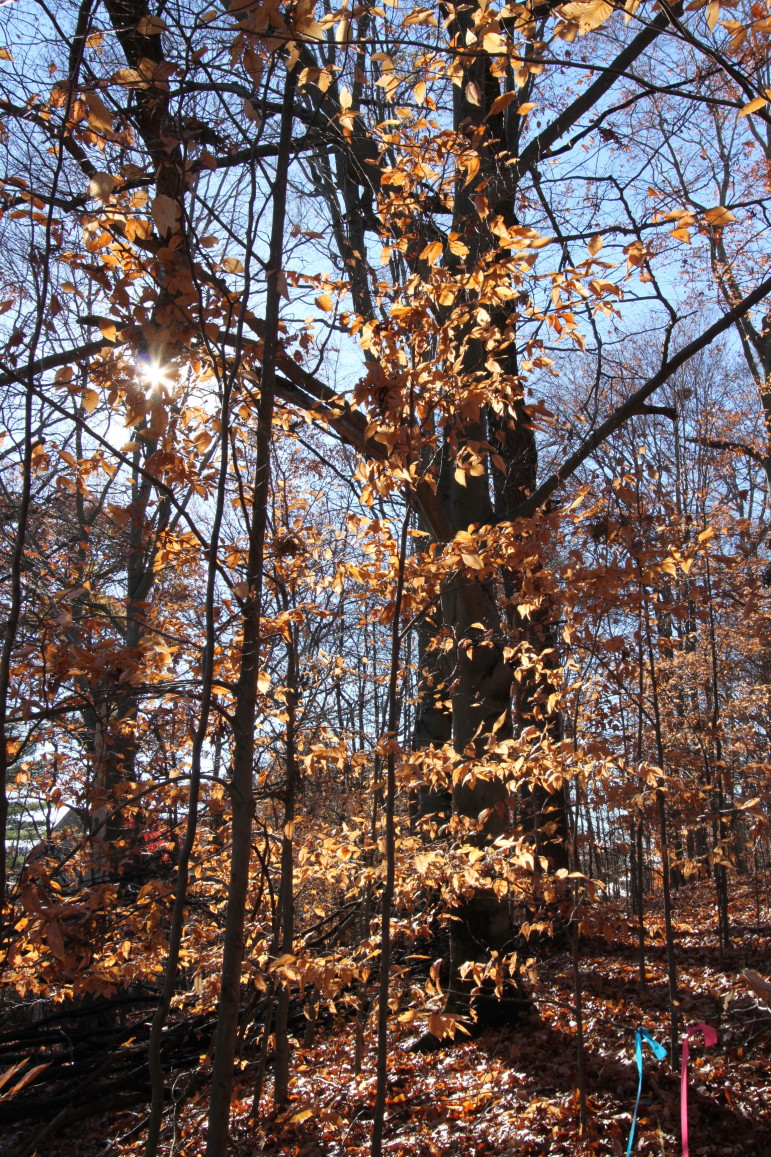
Charlie Breitrose
The sun shines through the trees on Whitney Hill while WHS biology students studied the trees in the area.
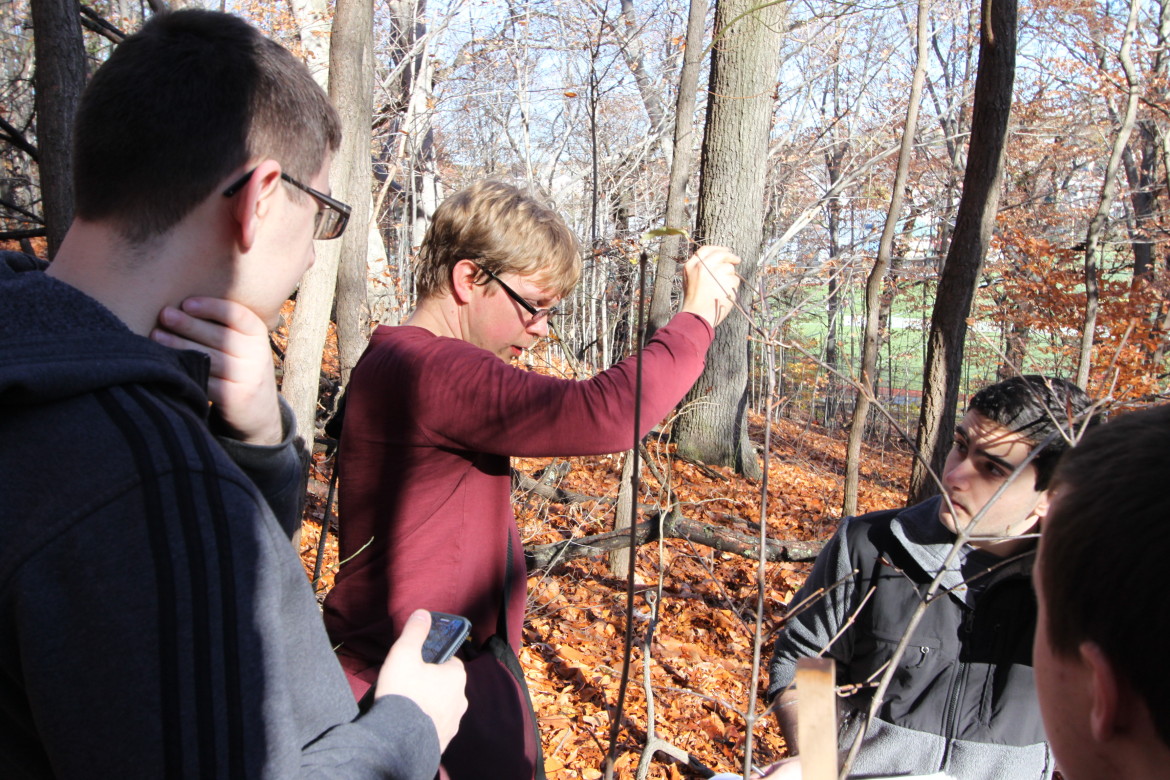
Yay! We are using these resources and in a Win Win way! I have been asking about this, not just for High School but also Elementary and Middle schools! (Lowell is walkable to this area and they could certainly do simple studies and the such in 4/5th grade..or learn about insects)
Good to see progress!